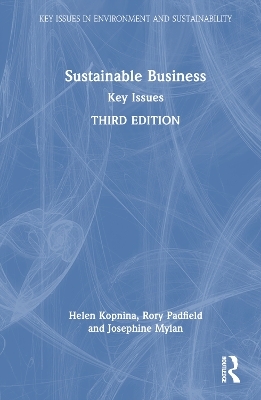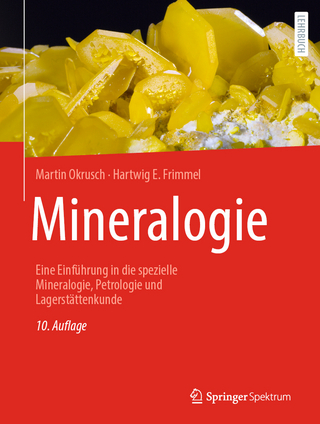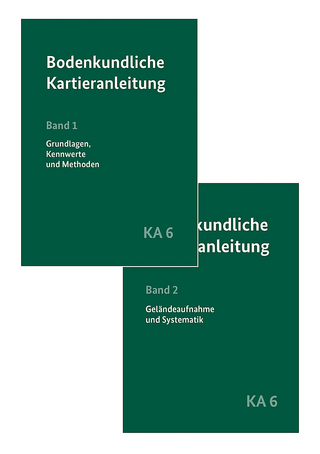
Sustainable Business
Routledge (Verlag)
978-1-032-20970-8 (ISBN)
Fully updated for the third edition to take into account recent developments and trends, such as the climate emergency, COVID-19, and supply chain sustainability, this textbook introduces students to the background and key issues of sustainability and suggests ways in which these concepts can be applied in business practice. Though the book takes a business perspective, it is interdisciplinary in its nature and draws on knowledge from socio-economic, political, and environmental studies, thereby providing a critical understanding of sustainability in the changing paradigm of global business. It goes beyond the conventional theories of sustainability and addresses critical issues concerned with population, consumption, and economic growth. It discusses realistic ways forward, in particular, the circular economy and Cradle to Cradle frameworks. The book is both a theoretical and a practical study guide for undergraduate and postgraduate students of broad areas of sustainability, teaching ways to recognize opportunities for innovation and entrepreneurship at the intersection of environmental, economic, ethical, and social systems. It takes a strategic approach in applying the power of business methods and policy to address issues of global importance such as climate change, poverty, ecosystem degradation, and human rights.
This textbook is essential reading for students of business, management, and sustainability courses. It is written in an engaging and accessible style, with each chapter including case studies, discussion questions, and end of chapter summaries.
Helen Kopnina (PhD Cambridge University, 2002) is currently employed at Northumbria University, Newcastle, UK. Helen teaches sustainable business and conducts research within three main areas: sustainability, environmental education, and biological conservation. Helen has (co)-authored over 200 articles and 17 books Rory Padfield is an Associate Professor in the Sustainability Research Institute at the University of Leeds, UK. He is programme leader for the MSc in Sustainability and Business at the University of Leeds, and co-leader for the Business and Organisations for Sustainable Societies (BOSS) research group. A trained development geographer, Rory’s research focuses on the broad themes of supply chain and natural resource governance, communication of sustainability, and sustainability across and between different scales of businesses and organizations. Josephine Mylan is a Senior Lecturer in Sustainability and Innovation at Alliance Manchester Business School. She is affiliated to both the Sustainable Consumption Institute (SCI) and Manchester Institute of Innovation Research (MIoIR). Josephine’s research engages with questions of how societies can transition to less resource-intensive ways of meeting our needs, with interests in sustainable consumption and production and low carbon transitions.
Table of Contents
List of Figures
List of Tables
List of Boxes
Foreword to new edition
Acknowledgements
List of abbreviations
SECTION I. KEY CONCEPTS
Chapter 1. Introduction: Key concepts in sustainability and business
What is this book about?
Brief definition of sustainability
Evolution of sustainability thinking
Business sustainability
Why do business sustainably?
Social and economic sustainability: linking business and society
Environmental sustainability: linking business and environment
Eco-efficiency
Introducing Cradle to Cradle and circular economy
What links business, ethics and sustainability?
How to do business ethically and sustainably?
Chapter organization
Case study Patagonia
Key terms
Discussion questions
Class Activity: How to save the planet: Degrowth vs Green Growth?
End of chapter summary
Chapter 2. Business ethics
Linking Sustainability and ethics
Different types of ethics
Corporate Social Responsibility (CSR)
From CSR to corporate citizenship
Human Rights
Labour issues: Poverty, pay and working conditions
Fairtrade
Business & Poverty - ‘bottom of the pyramid’
Animal welfare
Convention on International Trade in Endangered Species of Wild Fauna and Flora (CITES)
Corporate governance
Case study: Volkswagen’s response to the ‘emissions scandal’: Was it ethical?
Key terms
Discussion questions
End of chapter summary
Class Activity: Volkswagen
SECTION II CRITICAL EVALUATION: KEY CHALLENGES
Chapter 3. Environmental challenges
What is meant by environment?
Environmental impacts
Environmental problems
Climate change
Failing goals of reducing emissions
Corporate response to climate change
Loss of biodiversity
Limits to growth
Pollution and the industrial disasters
Waste
Causes and Explanations
Historical causes
Tragedy of the commons
Political causes
Commodification of nature
Ecological Restoration and Pollution Control
Ethical considerations
Environmental values
Case study: Shell and the Sustainable Development Goals
Key terms
Discussion questions
End of chapter summary
Class Activity
Chapter 4. Social and economic challenges
Poverty
Origins of poverty
Poverty and sustainability
Economic development
Inequality and development
Post-colonialism and neo-colonialism
Population growth
Causes of population growth
Demographic transition theory
What is sustainable development?
Sustainable Development Goals (SDGs)
Sustainable development paradox
Sustainable development and inequality
Business and sustainable development
The World Business Council for Sustainable Development (WBCSD)
Managing sustainable development in business
Case study: Who is the Victim of Climate Change?
Question
Key terms
Discussion questions
End of chapter summary
Class Activity: Debate Economic growth can be decoupled from increase in consumption of natural resources
Chapter 5. Key challenges for making sustainability a reality
The changing global business environment
Paradoxes of sustainability
Possibility vs. Dream
Practical challenges
Globalization of consumption
Disputing the mainstream sustainable business models
Short-term and long-term solutions
Critique of the triple bottom line
Critique of "sustainable" consumption
Rebound effect
Tackling oil dependency and climate skepticism
Ethical challenges
Intergenerational Justice
Biospheric Egalitarianism
Environmental justice vs. ecological justice
Charity paradox
The question of demographics
The role of decision-makers
Case study: Smart phones at school
Questions
Key terms
Discussion questions
End of chapter summary
Class Activity No Impact man
SECTION III. GLOBALIZATION, TECHNOLOGY, AND NEW TRENDS IN BUSINESS
Chapter 6. Globalization and business
What is meant by globalization?
Schools of globalization thinkers
"Risk society"
The relationship between globalization and sustainability
Global organizations concerned with sustainability
Globalization of sustainability concerns
The greening of global supply chains
Globalization of technology
Health: Medical technology
Agriculture: The Green Revolution
Manufacturing: Fordism and Post-Fordism
Technology: Energy
Digital Technology
The Internet of Things
Globalization of neo-liberal democracy
‘Groupthink’ or cultural hegemony: global spread
Theories of development and innovation
Ecological Kuznets Curve
Ecological modernization theory
Post-material value theory
Case studies: 3-D printing
Key terms
Discussion questions
End of chapter summary
Class Activity Imagine you are the CEO of a global company
Chapter 7. Strategic Change for Sustainability
Sustainability and Competitive advantage
Knowledge management
Creativity and innovation
Corporate Visioning
Green marketing and customer engagement
Green shopping and market segmentation
Responsible advertising
Brand value and sustainability
Role of Consultancies in promoting sustainability
Case Study: ‘B Corp’ Certification
Key terms
Discussion questions
End of chapter summary
Class Activity: Marketing a green enterprise
Chapter 8. Human Resource Management, green jobs and a green economy
Knowledge and Skills: Human Resource Development
Sustainability and HRM
Whistleblowing
HR and the social ecology of the organization
Continuing Professional Development (CPD)
Acquiring Ecological Self Knowledge
UN Principles of Responsible Management Education (PRME)
Sustainability and Leadership
Decent and Sustainable Work
Green Jobs in a Green[ing] Economy
Eco-entrepreneurship
Case Study: Unilever, Oxfam and Labour Rights in Vietnam
Key terms
Discussion questions
End of chapter summary
Class Activity Imagine you are head of an HR team
SECTION V SOLUTIONS
Chapter 9. Creating Sustainable Business Practice
Government regulation and policy
Polluter Pays Principle
The Precautionary Principle
Extended Producer Responsibility
The Participatory Principle
Environmental management systems
Eco Management and Audit Scheme (EMAS)
Sustainable supply chain management
Change management
Natural Step
Eco-labels
Sharing networks
Corporate Reporting
Global Reporting Initiative (GRI)
Green Accounting systems and Investment strategies
Case study: Supply chain innovation within the palm oil industry
Key terms
Discussion questions
End of chapter summary
Class Activity: Companies meeting SDGs
Chapter 10. New strategic thinking
Structural and social solutions
Collaboration and stakeholder engagement
Communication: ‘Talking the Walk’ initiatives
Understanding sustainable consumption
Consumer choice editing
Sharing economy
Realizing impacts: direct and indirect
Private and public action
Business and NGO cooperation
Green and ethical investment
Business and technological solutions
Business ecology
Industrial ecology
Life cycle assessment
Sustainable Design
Biomimicry
The Blue Economy
Case study: the rise of ‘slow fashion’
Key terms
Discussion questions
End of chapter summary
Class Activity: Sustainable and ethical investment
Chapter 11. Cradle to Cradle
Cradle to Cradle (C2C): the cycle of rebirth
Cradle-to-grave
Being ‘all good’: eco-efficiency versus eco-effectiveness
Nutrient cycles
Key principles of C2C
Waste = food
Use current solar income
Celebrate diversity
C2C Certification schemes
Material Health
Material Reutilization
Renewable Energy and Carbon Management
Water Stewardship
Social Fairness
Incorporating Cradle to Cradle design into products
Challenges to C2C
Case studies: Olio: Addressing food waste via an innovative circular business model
Key terms
Discussion questions
End of chapter summary
Class Activity: Student assignments Cradle to Cradle
Chapter 12. Towards circular economy
From optimizing existing models to revolutionary change
Background of circular economy concept
Drivers of change
Ellen MacArthur Foundation
Product-service systems (PSS)
The question of design
Organization of processes
Disruptive innovation
Assessing progress towards circularity
Selected similarities between sustainability and the circular economy
The risk of subversion
Scaling up circular economy
Closing the loop
Summarizing hopeful sustainability frameworks
Case study: The circular economy – business as usual or a necessary change?
Key terms
Discussion questions
End of chapter summary
Class Activity: Cradle to Cradle and a circular economy
Glossary
Bibliography
Index
| Erscheinungsdatum | 11.07.2023 |
|---|---|
| Reihe/Serie | Key Issues in Environment and Sustainability |
| Zusatzinfo | 6 Tables, black and white; 8 Line drawings, black and white; 39 Halftones, black and white; 47 Illustrations, black and white |
| Verlagsort | London |
| Sprache | englisch |
| Maße | 156 x 234 mm |
| Gewicht | 775 g |
| Themenwelt | Naturwissenschaften ► Geowissenschaften ► Geografie / Kartografie |
| Technik ► Architektur | |
| Technik ► Bauwesen | |
| Wirtschaft ► Betriebswirtschaft / Management ► Unternehmensführung / Management | |
| ISBN-10 | 1-032-20970-4 / 1032209704 |
| ISBN-13 | 978-1-032-20970-8 / 9781032209708 |
| Zustand | Neuware |
| Informationen gemäß Produktsicherheitsverordnung (GPSR) | |
| Haben Sie eine Frage zum Produkt? |
aus dem Bereich


